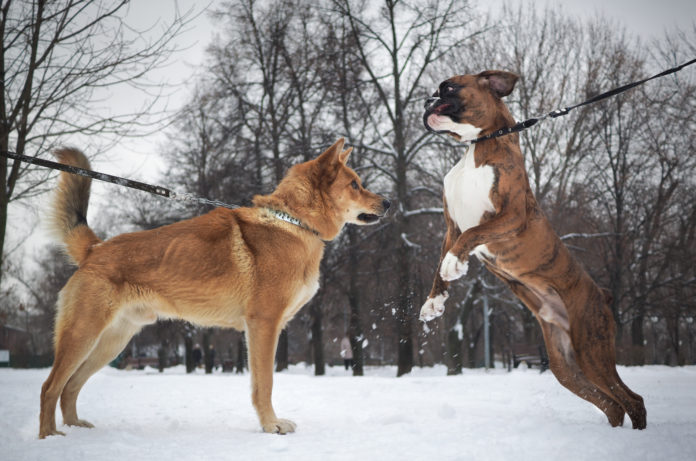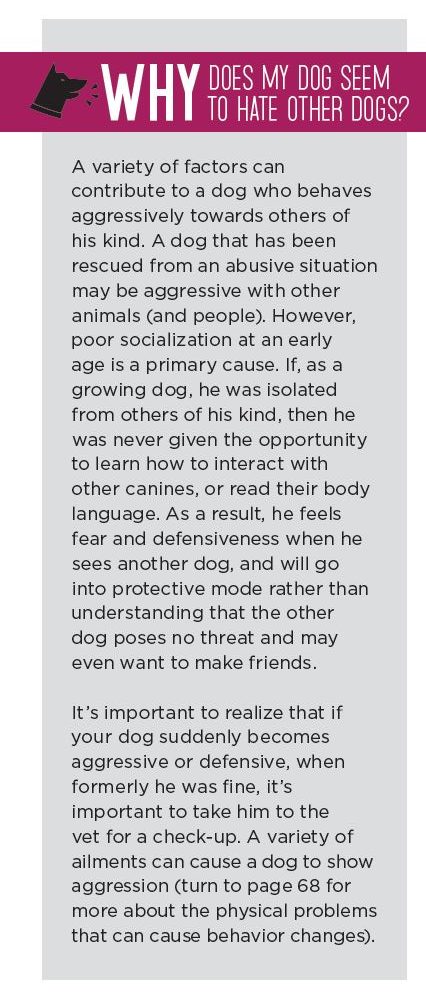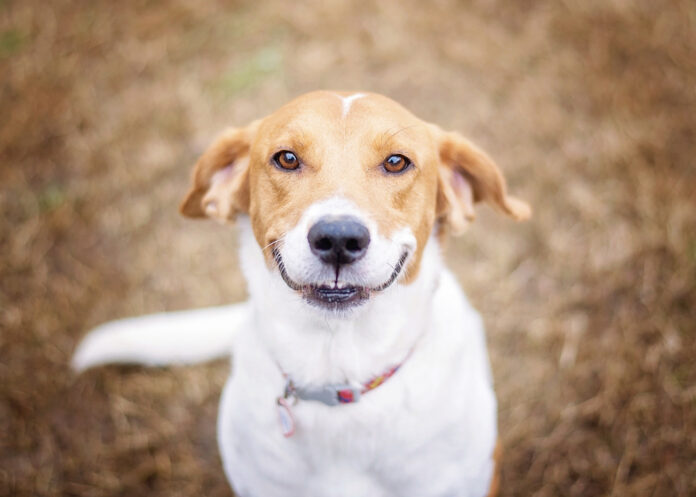Does your dog show aggression toward other dogs?

A 5-step guide to helping your canine companion overcome aggression towards other dogs.
If you have a dog who displays aggressive or defensive tendencies towards other dogs, you’ll agree that going for a walk can be a stressful activity for both of you. The good news is that dog-to-dog aggression is a behavior can be worked through using positive reinforcement training, as long as you’re patient and consistent. Below are five steps to help your dog gradually learn to accept other canines.
Positive training for aggression
A dog who displays aggression towards others of his kind is a serious issue, but by using positive reinforcement training, he can begin to associate meeting other dogs with something good, rather than reacting in a defensive or aggressive manner.
Like any mammal, dogs develop new neural pathways when learning. This means your canine companion’s brain can literally rewire itself through the formation of new neural pathways that will illicit a happy or balanced response when he meets another dog. Using consistent and ethical positive training will help you create these new pathways.
1. Start at a safe distance
Ask a trusted friend with a calm balanced dog to help your own dog learn to manage his reactivity. To assist your dog in moving through his defensive behavior or aggression behavior, he must be placed in a position where that behavior doesn’t take over to the point where he is unable to learn. This means finding a space to work where your dog can see the other canine is present, but is not close enough to elicit an aggressive reaction in your own dog.
Start by having your dog seated calmly by your side on his leash. When you’re ready, communicate to your friend to bring her own dog into sight at the established safe distance. At that moment, immediately begin giving your dog small pieces of a particularly scrumptious high-value treat, and continue with the treats for a number of seconds until the other dog is led away again. Once your friend’s dog is out of sight, immediately stop giving treats.
Repeat this process several times. Eventually, have your friend begin to slowly move her dog closer, in short increments. If your dog begins to react in an aggressive or defensive manner, immediately lengthen the distance again. This can be a long process that requires consistency and patience, so think long-term and prepare to move in baby steps.
2. Keep in mind that movement is key
When tension is held in the body, not being able to move can create additional stress and anxiety. In dogs, defensive or aggressive behaviors can be heightened if they are unable to move when in a stressful environment.
Once your dog is able to respond in a calm manner when your friend’s dog is within close (but not touching) distance, try walking both dogs in the same direction, one behind the other. The dogs should be far enough apart that your own canine is not lunging on the leash or exhibiting other forms of reactivity to the other dog. The walk should last less than one minute, during which you feed your pup high-reward treats.
It is important to make sure you are not creating unnecessary tension on the leash during the walk. You want to be calm and confident, so as not to transfer any anxious energy to your dog. When the walk is over, have your dog sit and continue feeding treats until the other dog is no longer in sight.
Once your canine companion is comfortable following your friend’s dog, switch roles and try having the other dog follow yours. This may be uncomfortable for him at first, so be prepared to lengthen the distance between the two dogs. Eventually, move to walking the dogs side by side, still providing your own canine with treats every few seconds. Your friend can also give her own dog treats to ensure no resource guarding behavior occurs. The distance between you can continue to be shortened, as long as your dog is reacting to the other’s presence in a balanced manner.
3. Allow the dogs to physically meet
Once your dog can walk confidently in close proximity to the other, allow them to meet, remembering to keep your body relaxed and to not create tension on the leash. If you wish, you can take an extra precaution by putting a muzzle on your dog; you can purchase muzzles that still allow your dog to drink, pant and accept treats.
Pulling your dog away from the meeting can create tension and illicit aggression. Rather, allow for a short meeting then have your friend walk her dog away while you praise your pup. These meetings can be lengthened as long as your dog is not showing signs of aggression.
4. Repeat this process with different dogs
Reinforce your dog’s new positive association with other canines by following Steps 1 through 3 with different dogs. The more dogs he is able to have positive interactions with, the more he will relax around any dog you come across. This process will become shorter and less tedious as your pup forms positive associations with meeting more new dogs.
5. Practice stress management while your dog is in training
If your dog is still highly reactive to other canines while on a walk, work to manage these stressors. If you see a dog approaching along the street, and you know yours isn’t ready for the interaction, calmly cross the street.
Also, try to set him up for success in his interactions with other dogs. This means seeing the other dog from a distance, rewarding yours for his calm behavior, then finding a route to take that will ensure the other dog doesn’t get close enough to trigger your pup’s unwanted behaviors. Well-handled unplanned interactions will help reinforce the planned interactions, rather than set your dog back.

Positive reinforcement training using high-reward treats is an ethical and effective way of helping your dog overcome his aggression when seeing or meeting other dogs. Remember that this is a process, and every dog and situation is unique. Practice managing your dog’s stressors while she is actively in training, and try to always set her up for success. If you’re having difficulty, get help from a positive trainer or canine behaviorist. It may take weeks or months for your dog to learn to accept others of his kind, but with patience and consistence, you’ll eventually start seeing the results you’re looking for.






